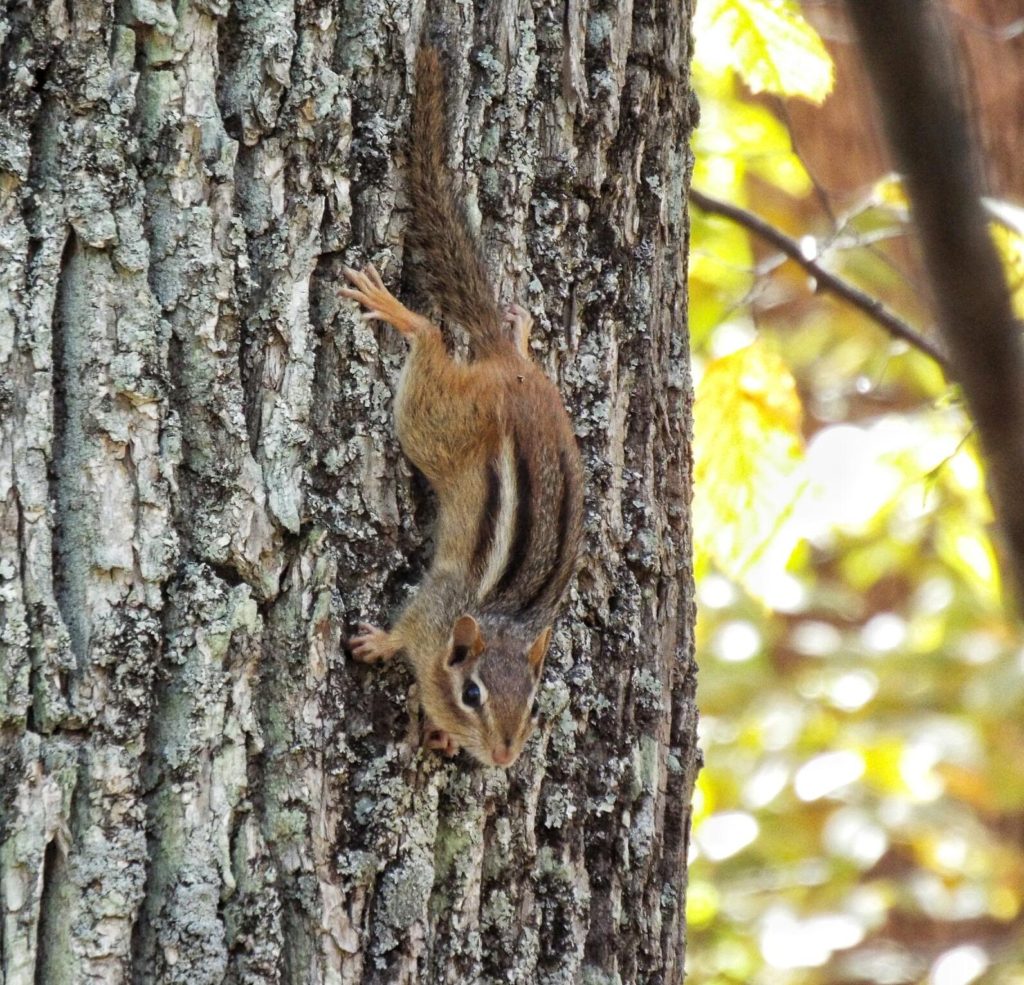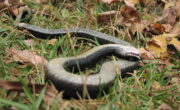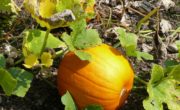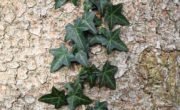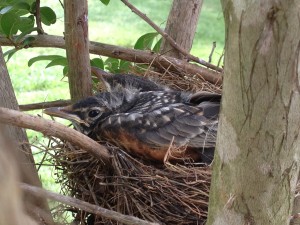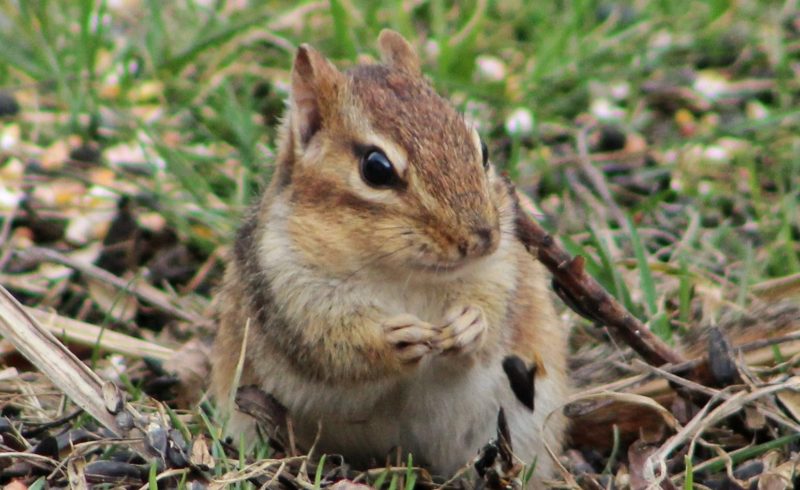
In one of my creative writing classes, a student included chipmunks in his descriptive paragraph about the woods. I was a little surprised, though, as his chipmunks were climbing trees. I made a note on his paper that they didn’t really do that, but he assured me that they did. It was time to find out more about these cute little rodents I’ve seen scurrying across the ground.
Where Chipmunks Live
Chipmunks are members of the squirrel family. They are smaller than squirrels, with large eyes, bushy tails, and horizontal stripes along their cheeks and sides. There are 25 species of chipmunks, and all but one can be found in North America.
Chipmunks spend much of their time on the ground. They are often found in areas with a lot of rocks, logs, or underbrush. This way, they can quickly escape from predators. Coyotes, foxes, hawks, and snakes will try to catch them. Other predators include owls, weasels, raccoons, and bobcats.
Chipmunks make warning sounds when danger is near. Sometimes they respond to the warnings of other animals, such as the alarm whistle of a woodchuck. Other sounds include squeaks and chirps. Check out this video featuring some of their sounds.
A chipmunk’s den also provides safety from predators. Some dens are nests hidden in bushes or logs. Others consist of dug-out chambers and tunnels. These tunnel systems can stretch from 10 to 30 feet long. They include food storage areas as well as a nesting chamber. The entrance is often camouflaged.
What’s on a Chipmunk’s Menu?
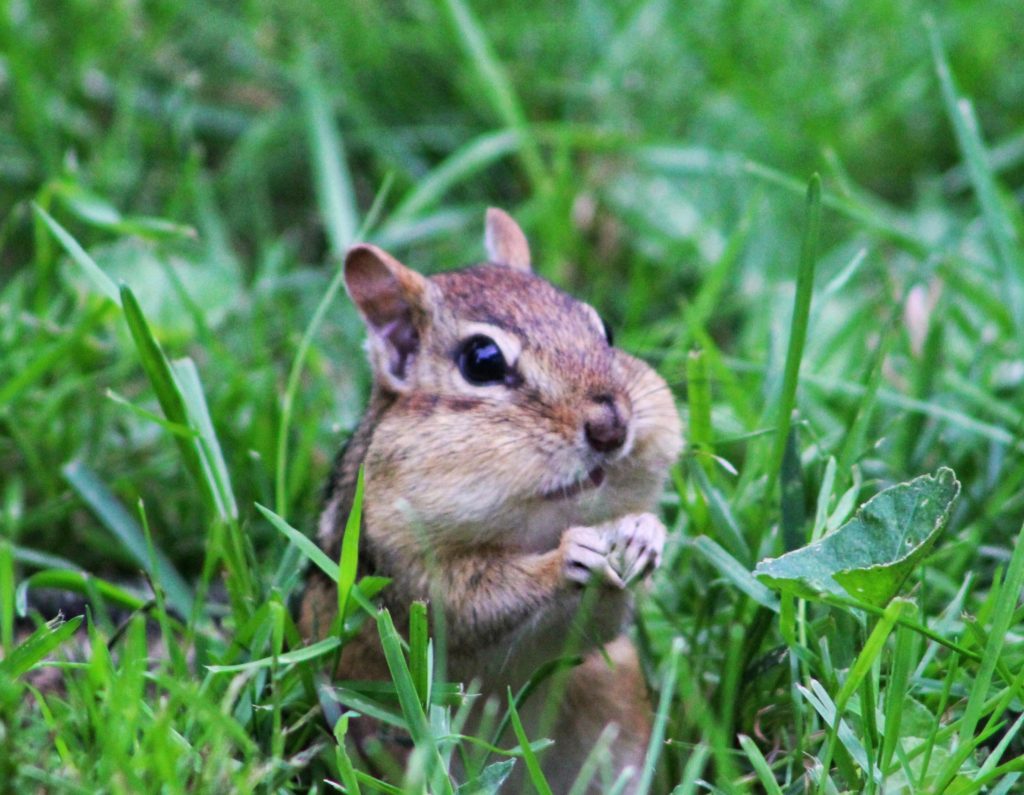 Chipmunks gather most of their food from the ground. They are omnivores and will feed on nuts, berries, grain, fruit, seeds, mushrooms, insects, frogs, lizards, and bird eggs. They stuff the food into the pouches on the inside of their cheeks and carry it back to their dens. In just two days, they can gather enough food to last them to the entire winter. Most store much more food than they’ll need.
Chipmunks gather most of their food from the ground. They are omnivores and will feed on nuts, berries, grain, fruit, seeds, mushrooms, insects, frogs, lizards, and bird eggs. They stuff the food into the pouches on the inside of their cheeks and carry it back to their dens. In just two days, they can gather enough food to last them to the entire winter. Most store much more food than they’ll need.
During the cold months, chipmunks remain in their dens. Starting in late October, they fall into a deep sleep with a slowed heart rate and lower body temperature. But unlike other hibernating animals, they don’t store fat. Instead, they wake up and dip into their food stores throughout the winter.
Family Time
Chipmunks mate in the spring and have litters of two to eight young. Females produce one or two litters a year. The babies are called kits, kittens, or pups. They are born blind, hairless, and helpless. They develop quickly, though, and start foraging outside the nest with their mother at about six to eight weeks.
And guess what? My student was right! Chipmunks are excellent tree climbers! Another surprising fact: They are also good swimmers!
To Learn More About Chipmunks
Want to learn more? Check out these websites:
“10 Things You Didn’t Know About Chipmunks”. Mother Nature Network.
“Chipmunk”. National Geographic.
“Eastern Chipmunk.” York County Conservation District.
“NOT Alvin and the Chipmunks: 10 Facts You May Not Know about the Real Rodents”. National Wildlife Foundation.
Photos by davidpwhelan




